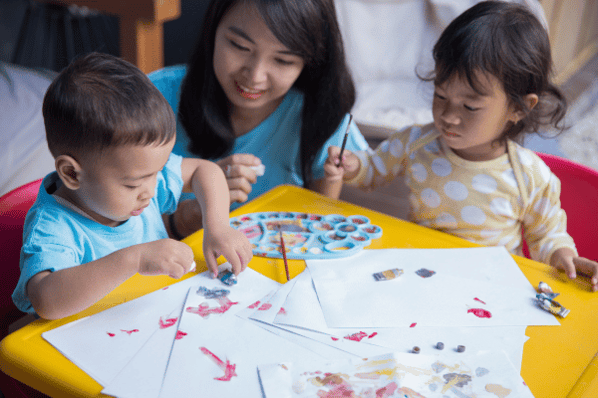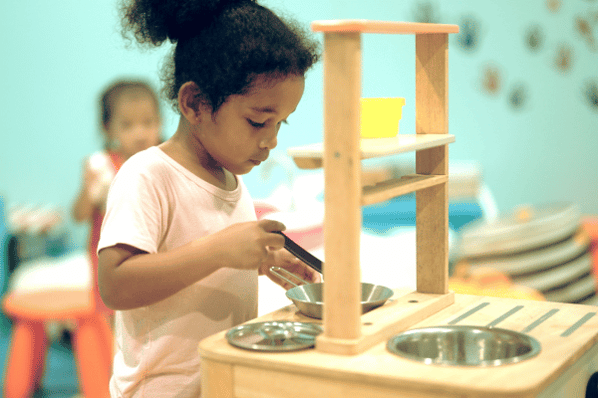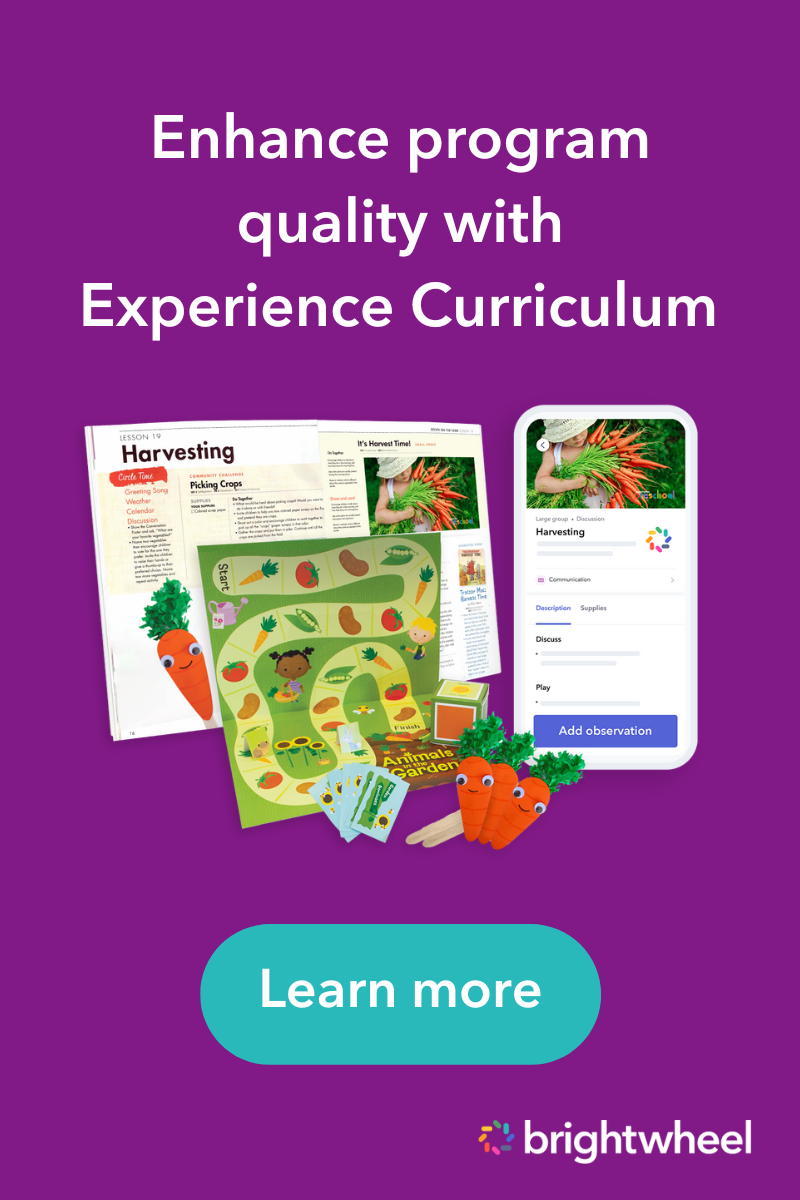Play-based learning is a powerful approach that has gained significant recognition in early education programs. Instead of relying solely on traditional teaching methods, play-based learning embraces the innate curiosity and creativity of children to foster their development.
By engaging in purposeful play, children not only acquire essential academic skills but also develop crucial social, emotional, and cognitive abilities. In this article, we will explore the numerous benefits of play-based learning in early education programs and understand how it lays a solid foundation for lifelong learning.
What is play-based learning?
Play-based learning is an educational approach that incorporates play as a central component of the learning process. It recognizes that children learn best through active engagement and exploration in a meaningful and enjoyable context. As children play, they engage their imagination, take risks, and learn problem-solving to support their development.
In a preschool classroom, play-based learning can take various forms. For instance, it could involve setting up hands-on sensory activities, such as a water table or a sandpit, where children can experiment and discover new textures and properties. It could also involve imaginative play with dress-up clothes or pretend kitchens, allowing children to explore different roles and scenarios while developing their language and social skills.
Play-based learning is child-initiated and teacher-supported. The teacher's role is to motivate and encourage the children to learn through interactions that expand their thinking. For example, if a child is working in the block area building a structure, you might try asking open-ended questions or prompts, such as:
- Tell me about the structure you’re building.
- Why did you choose those blocks?
- What do you think might be your next step?
Through play, children engage in problem-solving, critical thinking, and decision-making, all while having fun and building a strong foundation for future academic success.
5 key elements of play-based learning
For children to benefit from a play-based curriculum, it's important that educators incorporate all the elements of play-based learning. They include:
1. Self-chosen/self-directed
With play-based learning, a child must determine how to play, when, and for how long. Although there is no definitive guide on a child's preference, you’ll know it when you see it. Educators can suggest some games, but it should be up to the child if they want to take that direction or not.
Children find the smallest detail fascinating, and it's important to let them explore even when it may seem insignificant.
2. Enjoyable
Children have to enjoy their activities for play-based learning to work. Therefore, there should be no objectives or end goals for any exercise. For example, instead of offering blocks to children and instructing them to build something specific, just give them the blocks and watch what they do with them.
3. Unstructured
Unstructured, or free play, is probably the most crucial element of play-based learning. Unstructured means letting the child play and explore items with no objective. This type of play allows children to learn their interests and dislikes without any external influence. It also allows them to make mistakes and learn from them without the fear of failure.
4. Process oriented
Again, avoid giving children the procedure they need to mold their clay or arrange their play. The process is part of the journey, allowing children to express their creativity in depth without being concerned about a final product.
5. Imaginative
Pretend play is an important part of a child's learning experience as it allows them to use their imagination and creativity. Playing pretend and role playing also helps in nurturing children's empathy and developing their social-emotional skills.
What are the benefits of play-based learning?
Play-based learning has numerous benefits for children's development.
Promotes language development
A child's vocabulary significantly improves during the preschool years. Play-based learning allows children to explore new vocabulary words in an organic, relevant, and authentic way.
Play-based learning also allows children to engage in different forms of playful and reciprocal conversations. For example, when children are engaged in pretend play, one child may take on the role of the doctor and the other as the patient. Both children may take a turn asking a question or sharing information relevant to their roles.
Educators can support children's language development by introducing new words, participating in games, encouraging conversations, and asking questions.
Fosters creativity and imagination
Fostering imagination and creativity in young children have endless benefits for their social-emotional and cognitive development. When a child engages in play, they have the opportunity to explore and develop their problem-solving and interpersonal skills.
Play sparks and develops creativity and imagination. Pretend play typically emerges when a child is about two years old. You might observe them feeding a doll or rocking them to sleep. Later stages of pretend play become more complex with different settings, roles, props, and achieving a common goal with a peer.
Develops social-emotional skills
Play-based learning has a significant impact on a child's social and emotional development. They learn how to manage and deal with their emotions and the emotions of others.
Children also learn to communicate their needs with their peers and other essential skills like turn-taking and conflict resolution when playing. As they play, they are figuring out how to patiently wait for their turn to access an area or work with a material, negotiate, cooperate, and solve problems with their peers. All these are indispensable social skills.
Creates a positive disposition toward learning
There are so many ways play-based learning can improve a child’s attitude toward learning. With self-chosen play, children are more invested and engaged in activities because they're driven by their own interests and curiosity.
Giving children autonomy during play is not only fulfilling, but also allows children to confidently explore challenges, make goals, take appropriate risks, and learn to be persistent.
Improves motor skills
Play also enhances a child's motor skills. For example, activities such as painting, drawing, and building boost fine motor skills, while jumping, throwing, climbing, and running boost gross motor skills.
Enhance your program quality and incorporate more play into your children's learning with a system like brightwheel's Experience Curriculum. This complete curriculum system integrates 35 research-based skills into playful games and discovery projects. You can easily match the lessons in the app to the hands-on learning materials in the monthly curriculum kits, saving you time while supporting your children's development.
Parten’s six stages of play
Sociologist and researcher Mildred Parten believed that play has a large impact on children’s development. Her research centered on social play among toddlers and preschoolers from ages two to five and identified different stages of play that children progress through.
These stages are known as unoccupied play, solitary play, onlooker play, parallel play, associative play, and cooperative play. Below we elaborate on each stage.
1. Unoccupied play
The unoccupied play stage is the first stage of Parten’s six stages. In this stage, children mainly move their feet, legs, arms, and hands as they begin to discover their various body parts. Unoccupied play usually occurs from birth to around three months old. Children's body movements during the unoccupied play stage are often involuntary, erratic, and uncoordinated. This stage is important since it promotes sensory experiences, prepares children for solitary play, and promotes motor skills development and body awareness.
2. Solitary play
Solitary play, also known as independent play, is the stage where children play independently. This stage is typically common in children between the ages of three months and two years old. Children in this stage play with toys but aren’t interested in interacting with other children or adults. Examples of this type of play include children flipping through picture books or stacking blocks alone. Solitary play supports self discovery and encourages independence as children learn what they like and dislike and helps them solve problems on their own.
3. Onlooker play
According to Parten's theory, the onlooker play stage typically happens between two and a half and three and a half years old. It’s also known as the spectator stage since children in this stage usually only observe and watch other children play without necessarily joining them. During the onlooker play stage, children learn primarily through observation. Children will watch everything their peers are doing and take mental notes but won’t engage with them just yet.
4. Parallel play
Parallel play involves children playing side by side independently. This stage commonly starts around 18 months to two years old. In this stage, children will play alongside each other without interacting, however they are still aware of what is going on around them and are observing and mimicking their peers.
5. Associative play
The associative play stage starts when children are ready to interact with their peers during playtime, usually around three or four years old. Children may participate in similar play activities, talk with each other, or share play materials. Associative play is the beginning of active social interaction among children while playing. It’s critical for children’s development as it promotes social and communication skills.
6. Cooperative play
According to Parten’s six stages of play theory, cooperative play is the last stage of play. This stage involves children playing together to solve a problem or work on a project to achieve shared results. Most children exhibit cooperative play behavior at around age four or five. A child is ready for this stage when they can understand how to accept roles during play, exchange ideas, and share toys. Cooperative play is essential for children’s development as it promotes collaboration, sharing, conflict resolution, and communication skills.
Potential challenges with play-based learning
Play-based learning is a strong contender for one of the best approaches to early learning, however, it may not be for everyone.
Here are some of the challenges of play-based learning that educators have observed:
- Children have different personalities, social needs, and strengths, and some may not feel comfortable in a play-based learning environment with less structure.
- There is the possibility of resistance from educators and families who favor a strong kindergarten readiness program focused on academics with a more traditional approach to teaching, learning, and assessing skills.
- Some children who have participated in a play-based learning program may have a challenging time acclimating to a traditional elementary school program when they transition to kindergarten.
Examples of providers with play-based learning
Here are some preschools that are embracing play-based learning:- Alta Plaza Preschool
- Community Care Preschool
- Big City Montessori School
- Terra Mandarin Preschool
- Always Learning and Growing
- Petite Explorer
- Stepping Stones Preschool
- Cow Hollow School
Frequently asked questions on play-based learning
Here are common questions people ask about the play-based curriculum:
How do I know my child is learning?
You will notice an improvement in your child's problem-solving skills, learning behaviors, attitude towards school, and approach to other situations. In addition, teachers can share observations and portfolios to demonstrate a child’s progress over time.
Will my child be ready for kindergarten?
Children who have experienced a play-based curriculum have a positive disposition for learning and have advanced social-emotional skills. They are also confident, curious, and problem-solvers. They have all skills necessary to be ready to learn and take on new challenges that come with starting kindergarten.
Examples of play-based learning activities
Here are play-based learning examples:
Water play
As children play with water, they may learn concepts such as sinking and floating. This activity improves a child’s physical strength and hand coordination.
Dress up and role play
Pretend play supports social-emotional development as children learn perspective-taking through role play. They also benefit from learning how to play cooperatively and practice empathy by assuming caretaking roles.
Drawing and painting
Drawing and painting allow children to express themselves creatively and support their fine motor development necessary for emerging writing skills. Specifically, painting can offer a sensory experience when using your fingers and hands to paint as well as an impromptu science lesson in color mixing.
Music, singing, and dancing
The benefits of music and movement in early childhood development are well established. Music and dancing can help develop social-emotional skills, cognitive skills, motor skills, and sensory skills.
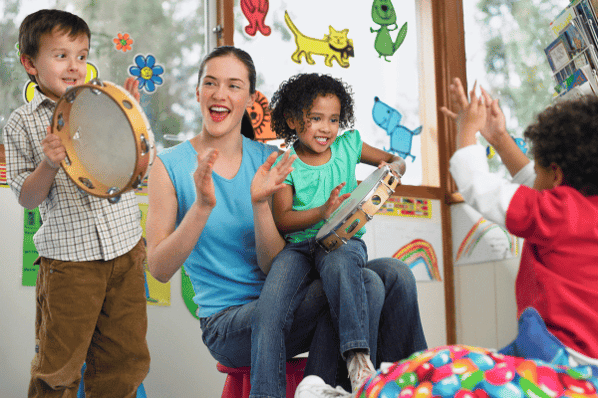
Pretend cooking
Pretend cooking, serving, and shopping are good scenarios for preschoolers to role-play as they learn how to interact with others. It also teaches basic mathematical concepts, home safety, and sensory play.
Final thoughts
Play-based learning is a powerful tool that unlocks a world of possibilities for children's growth and development. By integrating play into the learning process, children are given the freedom to explore, create, and make meaningful connections with the world around them. There are many benefits of play-based learning, ranging from enhanced cognitive abilities and problem-solving skills to improved social and emotional development.
Play creates an environment where children feel motivated, engaged, and excited to actively participate in their own education. By promoting play-based learning in schools and at home, children become well-rounded individuals who are equipped with the skills, creativity, and resilience needed to thrive in an ever-changing world.
Brightwheel is the complete solution for early education providers, enabling you to streamline your center’s operations and build a stand-out reputation. Brightwheel connects the most critical aspects of running your center—including sign in and out, parent communications, tuition billing, and licensing and compliance—in one easy-to-use tool, along with providing best-in-class customer support and coaching. Brightwheel is trusted by thousands of early education centers and millions of parents. Learn more at mybrightwheel.com.
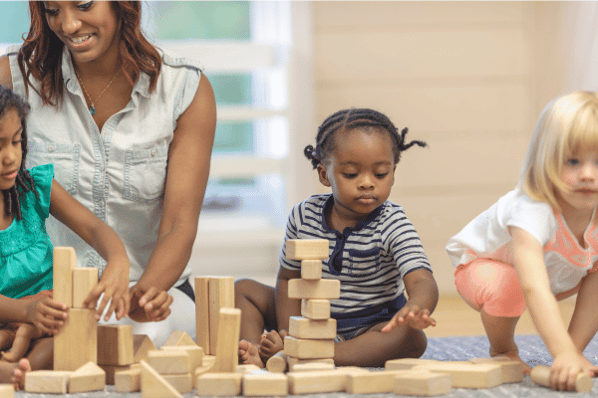
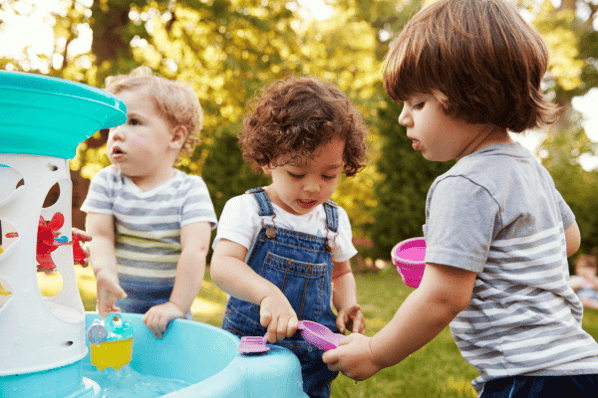
-png.png?width=598&height=399&name=pretend-play%20(1)-png.png)
